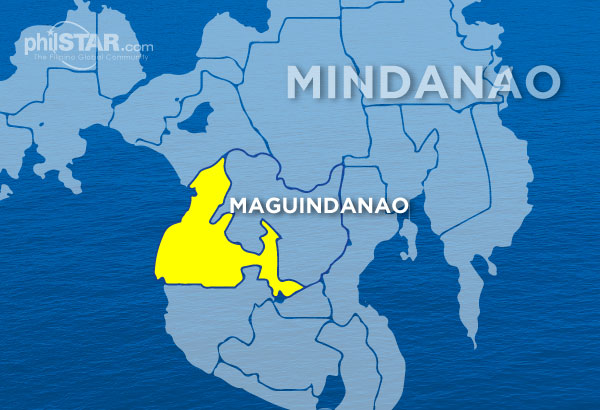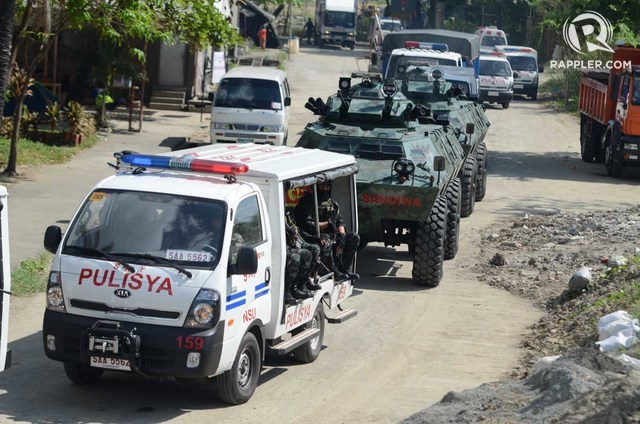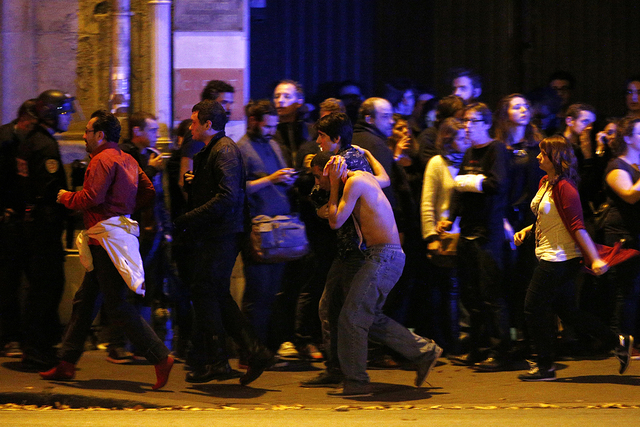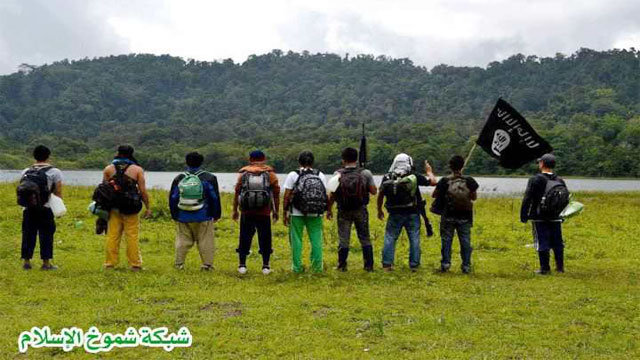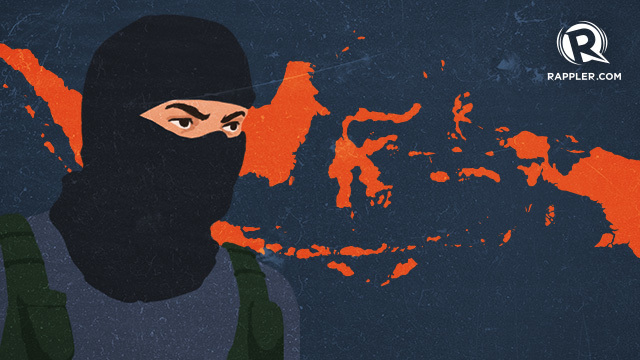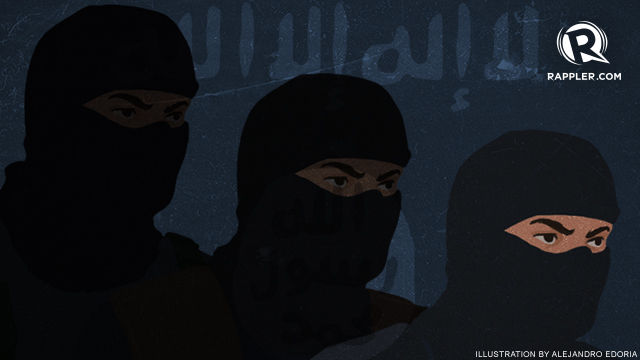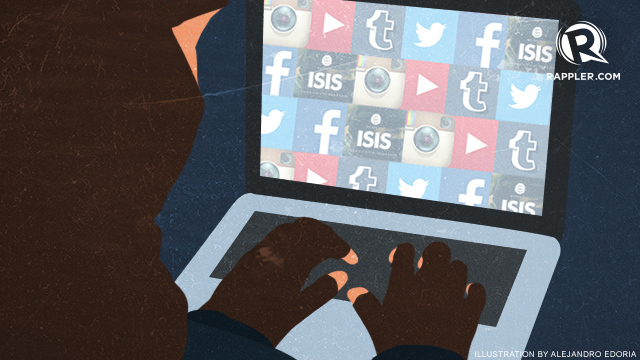A Kahimunan is a multi-tribe gathering of the Lumad peoples. Enclosed are statements and agreements formed during the meet held last November 13-15, 2015, courtesy of the National Commission on Indigenous Peoples.
The National Commission on Indigenous Peoples (NCIP) is pleased to share with you the activity report from the Confederation of IP leaders of the Manobo, Mamanwa, and Mandaya of Surigao del Sur as regards their Kahimunan on November 13 and 14 in Surigao del Sur:
Shacene Pension House, Tandag City (DWDD) – A Kahimunan of the Manobo, Mamanwa and Mandaya ICCs/IPs of Surigao del Sur was conducted on November 13 to 15 at the Shacene Pension House in Tandag City. It was participated by 59 IP leaders and 90 community members, including a group of Baylan.
The activity was spearheaded by the Indigenous Peoples Crisis Committee (IPCC) of the ICCs/IPs of Surigao del Sur with support facilitation from the National Commission on Indigenous Peoples at the field, regional and central office levels.
The Kahimunan was convened to provide a venue for ICC/IP leaders to meet, discuss and agree amongst themselves the different issues and concerns currently being confronted by the ICCs/IPs of Surigao del Sur, specifically the evacuation of some IPs from the Municipalities of Lianga, San Agustin, Marihatag, San Miguel and Tago.
The activity started with a series of rituals in the late afternoon of November 13 thru early in the morning of November 14. Afterwhich, the Kahimunan proceeded with the identification of issues and concerns, discussions and recommendations thru workshops and an open forum in a plenary session.
Result of the workshop and plenary session was further processed by the IP leaders in an assessment meeting the following day, November 15 on which the following STATEMENT and OTHER AGREEMENTS were deliberated, drafted and agreed upon.
A. STATEMENT OF THE IP CRISIS COMMITTEE REGARDING THE CRISIS OF THE INDIGENOUS PEOPLES IN SURIGAO DEL The turmoil being experienced by the indigenous cultural communities / indigenous peoples (ICCs / IPs) started when large companies entered the ancestral domains and took advantage of the wealth found therein. However, this predicament was given a solution through IPRA, which provides that no program or investment by any company may be done without going through the process of free and prior informed consent (FPIC). At present, no company is allowed to initiate activities or programs without soliciting the consent of the ICCs / IPs.
It is but dismal to contemplate that despite the existence of the Indigenous People’s Rights Act (R.A. 8371), there are still groups and organizations like the CPP-NPA and its allied NGOs, party-list organizations, among others that continue to enter the territory of the ICCs / IPs without first securing the FPIC. Their refusal to acknowledge the rights and power of the ICCs / IPs to administer their ancestral domains has caused conflict, which is far more cruel compared to what the ICCs / IPs have experienced in the hands of private companies. After investigation on the matter, this is evidently the reason behind the present chaos and conflict among the ICCs / IPs.Stand of IPCC Regarding Evacuees (Bakwit)
The evacuation of the ICCs / IPs last 2009 which happened again this 2015 almost have the same issue, initiated by the same group and participated by the same ICCs / IPs. It is just surprising that despite the peace being experienced by the ICCs / IPs, there are still several families who opted to join the evacuation (pagbakwit).
What is incomprehensible is why the group, claiming to defend the ICCs / IPs and who allegedly administers the affairs of the tribe inside the evacuation center, would not allow the leaders of the ICCs / IPs to speak to us. On several occasions, we were deprived of having the opportunity to speak with the Manobo ICCs / IPs who are inside the evacuation center.
Because of these, we have made these stand:
- The IPCC would continue to support the ICCs / IPs inside the evacuation center since they belong to the indigenous peoples but the IPCC would not be able to help in deciding whether or not it is proper for them to return to their respective communities as this is their decision to make and considering that they give more weight to the command being given by the political groups or NGOs that initiated their evacuation;
- The IPCC calls the NGOs and political groups behind the evacuation to stop using the ICCs / IPs as milking cows. The current situation of the evacuees has made them vulnerable to being taken advantage of by the NGOs so that these groups would be able to continue to seek support and funds from overseas;
- The rift among ICCs / IPs inside the evacuation centers is apparent. Many of them are left confused considering that the NGOs, which support them, continue to injure their trust on their community and local government leaders;
- The NGOs and party-list groups’ meddling in the problems of the ICCs / IPs and these groups’ refusal to respect the tribes’ tradition are huge violations to the rights of the ICCs / IPs. There is a need to penalize them under customary laws (bonae) in order to prevent them from their continued destruction of the traditional ways of the ICCs / IPs in negotiation and collaboration;
- We strongly condemn the threats of the CPP-NPA against the ICCs / IPs, who wish to join the IPCC. Their savage way is the main reason why the ICCs / IPs have learned how to be vicious. Their armed struggle has brought many weaponries to the mountains. Their perennial war has brought the culture of combat in the mountains.
Over the past 10 years, more than three hundred lumads have been killed by the CPP-NPA. On the otherhand, lumads have also been killed due to military operations.
The killings of the ICCs / IPs have been a big issue that is being used by the CPP-NPA as anchor on their war against the government. The ancestral domains, which used to be peaceful, has become a combat area between the CPP-NPA and military. The ICCs / IPs, who were once fearful of hostilities, have become combatants considering that they were flooded with propaganda by the CPP-NPA.
The ICCs / IPs do not have the intention to engage in any battle against any group. It is the lumad’s culture to compromise so that peace may flow. There is a system of mediation and penalty inside the tribe. Settling disputes through non-violent means is part of the tribe’s customs. However, all these have faded away and have been destroyed because of CPP-NPA’s claim that war is the only solution. The peaceful tradition of the ICCs / IPs was destroyed because of the brutality being propagated by the CPP-NPA.
Because of these, we have made these stand:
- Justice should be given to all lumads who were killed due to the armed revolution of the CPP-NPA. The fact that the ICCs / IPs have now become combatants is the doing of the CPP-NPA. In fact, this is apparent based on their statements and propaganda that several places have become guerilla fronts or guerilla bases. They did this without due regard on whether or not this would destroy the way of life and tradition of the ICCs / IPs, specifically in Surigao del Sur;
- It is our hope that the local government units, religious sectors, people from the Civil Society Organizations and other groups who call themselves as human rights advocates would see and realize that the victims are not only those in the evacuation centers. The victims are actually the entire Manobo and Mamanwa tribes, who every now and then are being frightened, threatened, and forced to evacuate because their homes have become venues of warfare. However, instead of being fair, those who head the province, municipality, religious sectors and NGOs have opted to join the leftist groups in defending the fault of the CPP-NPA;
- An independent group or commission should be created, which function is to investigate the real plight of the ICCs / IPs. The root of the chaos and the death of the lumads can only be traced back to the existence of the CPP-NPA inside the ancestral domains;
- The CPP-NPA should be evicted from the ancestral domains and must be penalized because of the huge devastation that they have made to the tribes. How they trampled the tradition, their destruction of the beliefs of the ICCs / IPs’ youth and children, the rift they caused among the tribe, how they have chosen leaders to use as their puppets all the while condemning those who do not adhere to their wants, and their continued dominance inside the ancestral domains have brought destructions much more than the mining industry that has denuded and demolished the forest. Mining has destroyed the environment but the CPP-NPA abolished the core of the tribe.
- Closing of schools inside the ancestral domains, which teaches war as a means to change the situation. The education they impart is of no value if its only intent is to generate rage and aggressiveness among the students so that they become combatants. The education they impart is of no value if it results to the annihilation of culture, customs and traditions of the ICCs / IPs;
- Enforce projects that would help the tribe flourish such as education, health, farm-to-market roads, livelihood projects, and support so that the genuine leader of the tribe would rise;
- The government officials should lead in ensuring that the ancestral domains is free from the exploits of the CPP-NPA. They should instead focus on realizing their obligations in defending the people and developing their livelihood.
B. OTHER MATTERS DISCUSSED AND AGREED UPON:
- Request for the IPCC to lead the evacues (bakwit) back to their respective homes
They requested the IPCC to lead the return of the evacuees to their ancestral domain. However, the IPCC decided not to shepherd them out from the gymnasium because of the perception that this is just a ploy of the CNN. The IPCC believes that the women were sent intentionally to lure them rescue the IPs from the gymnasium. But, once in their ancestral domain, the NPA will do the corresponding harassment, even kill them and blame the same to the AFP/government and with the IPCC being dragged as a conduit of the AFP/goverrnment.
The IPCC believes that the evacuees can freely return to their homes even without the IPCC leading them.
- IPCC decision on the three(3)-month ultimatum thru a statement in the declaration of a pangayaw/magahat by Datu Joel Unad during the Congressional Hearing called by the Committee on Indigenous Cultural Communities
- On family conflict resolution initiative
The Office of Empowerment & Human Rights (OEHR) and the Office on Policy, Planning and Research (OPPR) of NCIP will follow through the above cited initiatives.
__
[Statement by the IPCC in the original Bisaya Version]
PAMAHAYAG SA IP CRISIS COMMITTEE MAHITUNGOD SA KRISIS NGA GIATUBANG SA MGA TRIBUNG KOMUNIDAD SA SURIGAO DEL SUR
Ang kagubot sa mga komunidad sa lumad nagsugod sa dihang misulod ang mga dagkung kompanya nga mipahimulos sa mga bahandi sa sulod sa yutang kabilin sa mga tribu. Apan pinaagi sa IPRA, nahimoan kini og kasulbaran sanglit dili naman mahimo nga makasulod ang bisan unsa pa man nga mga programa ug investment sa bisan kinsa pa man nga kompanya nga dili mosubay sa mga proseso sa pagtugot sa tribu. Karon wala nay kompanya nga mahimong magpasiugda og mga kalihukan o mga programa nga dili mosanghid o dili mokuha sa pagtugot sa tribu.Subo lang palandungon nga taliwala sa pagtunhay sa Indigenous People’s Rights Act, aduna pa gihapoy mga grupo ug mga organisasyon sama sa CPP-NPA ug ang mga kauban niini nga mga NGOs, Party-list organizations, ug uban pa nga padayon nga misulod sa mga teritoryo sa tribu nga walay pagkuha sa pagtugot sa tribu. Ang ilang pagdumili sa pag-ila sa katungod sa tribu ug sa gahum niini sa pagdumala sa yutang kabilin nahimong pabilo usab nga mipatumaw og usa ka matang sa kagubot nga mas bangis pa kompara sa nahimong kasinatian sa mga tribu atubangan sa mga pribadong kompanya. Sa among pagsusi ug sa among pagpamalandong, kini ang nagpaluyong hinungdan sa mitumaw nga mga kagubot sa tribung komunidad karong panahona.
Baruganan sa IPCC Mahitungod sa Bakwit
Ang pagpamakwit sa mga tribung komunidad niadtong 2009 ug karong 2015 halos pareho lang ang isyu, pareho lang ang grupo nga nagpasiugda, ug pareho usab ang mga komunidad nga nagbakwit. Ang katingad-an lang kay bisan ang mga komunidad nga walay kagubot nga nahitabo, aduna usab pipila ka mga pamilya ang miuban gihapon sa pagbakwit.
Ang dili lang namo masabtan kay ang mga grupo nga kunohay nanalipod sa mga tribu og maoy nagdumala sa tribu sa sulod sa mga evacuation center dili man mosugot o motugot nga maistorya sa mga lider sa tribu ang mga namakwit. Sa makadaghang higayon, gihikawan kami nga maistorya ang mga lumad Manobo nga anaa sa evacuation center.
Tungod niini, nahimo namo ang mosunod nga baruganan:
- Ang IPCC padayon nga magsuporta sa mga tribu nga anaa sa evacuation center sanglit tribu man sila, apan dili makatabang ang IPCC sa pagdesisyon kon angayan na ba nga mamauli sila sa ilang tagsa-tagsa ka lugar sanglit ila man kining desisyon, ug mas labaw man nila nga ginasunod ang mando sa mga grupo o NGOs nga nagpasiugda sa ilang pagbakwit.
- Nanawagan ang IPCC sa mga NGOs ug pulitikanhong pundok nga nagpaluyo sa bakwit nga ihunong na nila ang paggamit sa tribu isip gatasan. Ang kahimtang sa bakwit nahimong kahigayonan nga gipahimuslan sa mga NGOs alang sa ilang padayon nga pagpangalap og suportang pundo gikan sa gawas sa nasud.
- Klaro ang pagkabahin-bahin sa panghuna-huna sa mga lumad nga anaa sa evacuation centers. Daghan kanila ang naglibog na pag-ayo sanglit padayon man nga ginadaut sa mga NGOs nga nagsuporta kanila ang ilang pagsalig sa mga lider sa tribu sa ilang komunidad ug lungsod.
- Ang pag-apil-apil sa mga NGOs, party-list sa problema sa tribu ug ang ilang pagdumili sa pagrespeto sa tradisyon sa tribu usa ka dakung kalapasan sa katungod sa tribung komunidad. Kinahanglan nga i-bonae sila aron mahunong na ang ilang pag-guba sa traditional nga mga pamaagi sa mga tribung komunidad sa pagsabot-sabot ug pagtinabangay.
- Hugtanon namo nga gi-kondena ang paghulga sa CPP-NPA ngadto sa mga lumad nga buot mopailalom sa payong sa IPCC. Ang ilang bangis nga mga pamaagi maoy hinungdan nga nakat-on ang mga lumad sa kabangis. Ang ilang armadong pakigbisog maoy nagdala og daghang armas sa kabukiran. Ang ilang malungtarong giyera nahimong kultura sa giyera diha sa kabukiran.
Sa milabay nga 10 ka tuig, kapin sa tulo ka gatos nga mga lumad ang gipatay sa CPP-NPA. Samtang aduna usab mga lumad ang namatay tungod sa mga operations sa kasundalohan sa Gobyerno.
Ang kamatay sa mga tribung komunidad nahimong daku nga isyu tungod sa padayon nga pag-gamit sa CPP-NPA sa mga yutang kabilin sa tribu isip panukaran sa ilang pakig-gubat sa gobyerno. Ang yutang kabilin nga kanhi malinawon, nahimong nataran sa mga giyera ug engkwentrong militar. Ang kanhi mahadlukon sa kagubot nga mga tribung komunidad, nahimong manggugubat sanglit gihubog man sila sa mga propaganda ug pasalig sa CPP-NPA.
Ang katawhang lumad walay intension nga makig-gyera batok sa bisan kinsa nga grupo. Tradisyon sa tribu ang pakigsabot aron motunhay ang kalinaw. Sa sulod sa tribu, anaay sistema sa paghusay ug pagsilot. Sa batasan sa tribu, ang tanang problema sulbaron sa malinawon nga paagi. Apan kining tanan naguba ug nahanaw tungod kay giyera ang gitudlo kanamo sa CPP-NPA nga mao kuno’y bugtong solusyon. Naguba ang malinawong tradisyon tungod kay kabangis man ang gipakaylap sa CPP-NPA.
Tungod niini, nakahimo kami niining mosunod nga baruganan:
- Ipatumaw ang hustisya alang sa tanang gipatay ug namatay tungod sa armadong rebolusyon sa CPP-NPA. Ang pagkahimo sa mga tribung komunidad nga panggubatan binuhatan sa CPP-NPA. Gani makita kini diha sa ilang mga pamahayag ug propaganda nga ang maong lugar usa ka guerilla front o guerilla base. Gihimo nila kini sa walay pagpamalandong kung dili ba kini makaguba sa kahimtang ug tradisyon sa mga tribu sa Surigao del Sur.
- Ang local nga mga panggamhanan, ang kasimbahanan, ang mga ginatawag nga Civil Society Groups, ug ang tanang grupo nga nagtawag sa ilang kaugalingon nga human rights advocates makita ug maamgohan unta nila nga ang mga biktima dili lang ang naa sa mga evacuation centers. Ang biktima maong tibuok tribung Manobo ug Mamanwa nga sa matag karon ug unya mahadlok, mahasi, mamakwit sanglit ang ilang kaugalingong pinuy-anan nahimo naman nga nataran sa pakig-gubat. Apan imbis mahimong patas ang mga nangulo sa probinsya, sa lungsod, sa simbahan ug sa mga NGOs, miuban naman hinoon sila sa mga leftist nga grupo aron panalipdan ang sala sa CPP-NPA.
- Ilunsad ang usa ka independent nga grupo o commission nga maoy magtuki ug mag-imbestiga sa kahimtang sa mga tribung komunidad. Ang pabilo sa kagubot ug kamatay sa mga lumad walay lain kung dili ang armadong pakigbisog sa CPP-NPA nga diha nanukad sa yutang kabilin sa tribu.
- Papahawaon ug i-bonae ang CPP-NPA tungod sa grabeng kadaut sa tribu nga ilang nahimo. Ang ilang pagyatak sa tradition, ang ilang pag-guba sa panghuna-huna sa mga bata ug kabatan-onan, ang ilang pagbahin-bahin sa tribu, ang ilang pagpili og mga lider nga himoon nilang itoy samtang gikondena nila ang dili motuman kanila, ug ang ilang padayon nga paghari sa sulod sa yutang kabilin labaw pa sa kadaut sa mga minahan nga miupaw ug mibungkag sa kabukiran. Ang mga minahan miguba sa kinaiyahan. Apan ang CPP-NPA, miguba sa diwa sa tribu.
- Ipasira ang mga iskwelahan sa sulod sa yutang kabilin nga nagtudlo sa giyera isip pamaagi sa pag-usab sa kahimtang. Walay pulos ang edukasyon kung ang tuyo lamang niini nga magbaton og kapungot ug kabangis ang mga istudyante aron mahimo silang manggugubat. Walay pulos ang edukasyon kung moresulta kini sa pagguba sa batasan ug kultura sa tribu.
- Ipatuman ang mga proyekto nga mopalambo sa mga tribung komunidad sama sa edukasyon, panglawas, farm-to-market roads, mga programang panginabuhian, ug suporta alang sa pagbarug sa tinuod nga mga lider sa tribu.
- Sa mga local nga mga government officials, manguna unta sila sa pagseguro nga ang yutang kabilin gawasnon gikan sa CPP-NPA. Imbis nga makig-alyado sila sa CPP-NPA, unahon unta nila ang paghatag og katumanan sa ilang mga obligasyon diha sa pagpanalipod sa katawhan ug pagpalambo sa ilang panginabuhian.
http://dwdd.com.ph/2015/true-lumad-voice-statements-from-kahimunan-of-ips/



